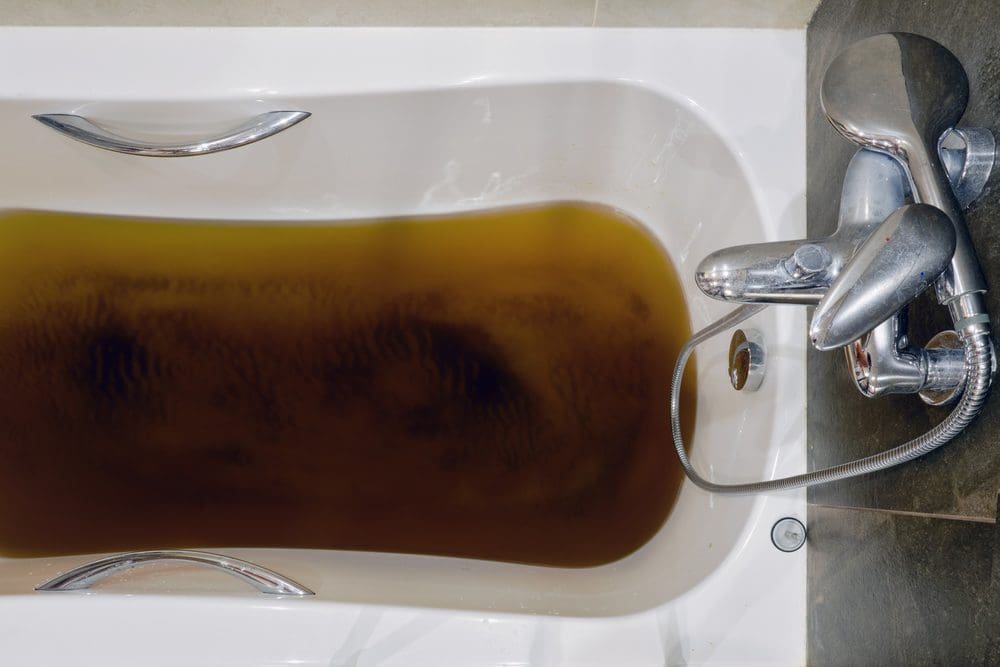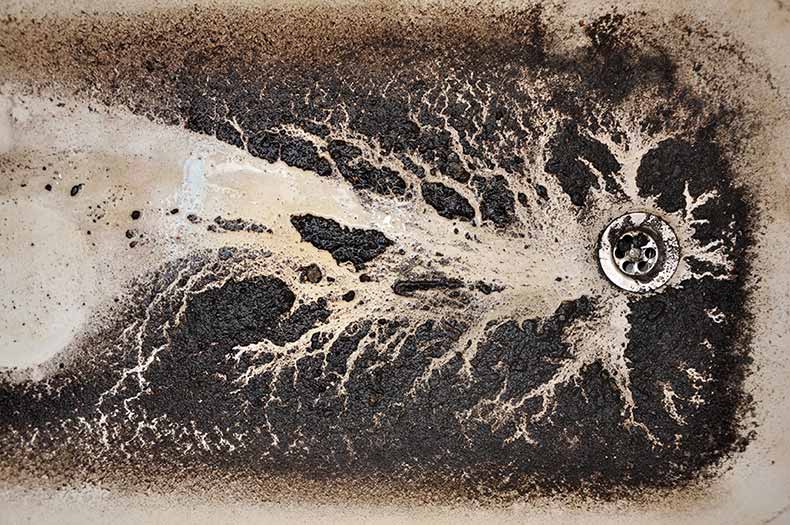Investigating the Causes of Discharge Backflow in the Bathtub
Investigating the Causes of Discharge Backflow in the Bathtub
Blog Article
The author is making a few great points related to What to Do if Sewage Starts Coming Up Through Your Bathtub as a whole in this content directly below.

Sewer backup in the bathtub can be a distressing and unhygienic problem for any kind of homeowner. Not only is it bothersome, however it additionally postures severe health dangers and shows underlying issues with the plumbing system. Comprehending why sewage is coming up via the bath tub is important for taking suitable action to deal with the trouble successfully.
Intro to the Issue
Common Factors for Sewer Backup
Obstructions in the Drain Line
One of the most typical causes of sewer back-up is an obstruction in the drain line. This can take place due to the buildup of debris, oil, or international things in the pipes, stopping appropriate circulation and triggering sewage to back up into your bath tub.
Tree Root Breach
Tree roots seeking dampness and nutrients can penetrate sewer lines via small cracks or joints. Over time, these roots can grow and expand, creating significant damage to the pipes and bring about sewer back-up concerns.
Recognizing the Trouble
When sewage starts backing up into the bath tub, it's a clear indicator of a problem with the drainage system. The wastewater that must be streaming away from your home is instead discovering its way back right into your home, which can lead to significant damages and carcinogen.
Prospective Causes
A number of elements can add to sewer backup in the tub. From blockages in the drain line to issues with the plumbing facilities, recognizing the root cause is important for discovering a solution.
Aging Facilities
Older homes may have obsoleted plumbing systems that are much more susceptible to deterioration, cracks, and degeneration. As pipes age, they end up being much more prone to leakages and obstructions, enhancing the probability of sewer backup events.
Heavy Rainfall or Flooding
During durations of heavy rainfall or flooding, the drain system may end up being overwhelmed with excess water, triggering back-ups and overflows. This can result in sewage supporting right into tubs and other components inside the home.
Signs of Sewer Back-up
Foul Odors
Unpleasant smells emanating from drains pipes or components, especially in the restroom, may show sewage backup problems. These smells are typically solid and persistent, indicating a problem that requires instant interest.
Slow Draining Fixtures
Tubs, sinks, and commodes that drain slowly or not in any way could be experiencing sewage back-up. If multiple components are influenced all at once, it's likely that the issue originates from a typical point, such as the major sewage system line.
Gurgling Noises
Unusual gurgling or gurgling sounds coming from drains pipes when water is running somewhere else in your home are indicative of air entraped in the plumbing system. This air accumulation can arise from sewer backup and must be checked out quickly.
Health Risks Related To Sewage Back-up
Contamination of Water
Sewer backup can pollute the water in your house, posing a serious health and wellness danger to you and your family members. Direct exposure to infected water can bring about gastrointestinal concerns, skin infections, and other ailments.
Mold Growth
Dampness from sewage back-up can produce suitable conditions for mold and mildew growth in your house. Mold and mildew spores can aggravate respiratory issues and create allergic reactions in sensitive individuals, making punctual cleaning crucial.
Spread of Illness
Sewer includes damaging microorganisms, viruses, and parasites that can cause a variety of conditions, including hepatitis, cholera, and gastroenteritis. Entering contact with sewage or contaminated surfaces places you at risk of infection.
Cleaning Up After Sewage Backup
Sanitation Procedures
Thoroughly disinfect and sterilize affected locations after sewer back-up to remove dangerous microorganisms and prevent mold and mildew growth. Usage ideal cleaning items and safety gear to ensure secure and efficient cleaning.
Repair of Affected Locations
Fix any damage to flooring, wall surfaces, or components caused by sewage backup. Depending upon the degree of the damage, you may require to replace carpets, drywall, or other materials to restore your home to its pre-loss problem.
Immediate Actions to Take
Switching Off Water System
In case of sewage back-up, it's essential to switch off the water system to prevent further contamination and damages. Situate the primary water shutoff valve in your home and shut it off up until the problem can be solved.
Getting In Touch With an Expert Plumber
Managing sewage backup is not a DIY work. Contact a certified plumber with experience in dealing with sewage-related problems to evaluate the situation and perform needed repair services or clean-ups.
Preventing Contact with Contaminated Water
Until the sewage backup is resolved, prevent contact with contaminated water to avoid the spread of germs and pathogens. Put on safety equipment if you should remain in the affected location and wash your hands thoroughly later.
Preventive Measures
Regular Maintenance of Sewage System Lines
Arrange regular assessments and upkeep of your drain lines to recognize and attend to prospective issues prior to they escalate into significant troubles. This can include cleaning out debris, evaluating for tree root breach, and repairing any kind of damaged pipes.
Installing Backwater Valves
Consider setting up backwater valves in your plumbing system to stop sewage from receding right into your home throughout durations of heavy rainfall or flooding. These valves immediately close when water draws back up, protecting your building from contamination.
Proper Disposal of Household Waste
Avoid purging anything other than toilet paper and human waste down the commode to stop obstructions and obstructions in the sewer line. Dispose of oil, oil, and other household chemicals correctly to reduce the danger of plumbing issues.
Sewage Coming Up Through the Bathtub?
Understanding the Plumbing System:
To understand why sewage is coming up through your bathtub, it is essential to have a basic understanding of the plumbing system. The plumbing system is a complex network of pipes, valves, fixtures, and drains that work together to provide clean water to your home and remove waste and sewage. The system consists of two parts: the supply system and the drainage system.
The supply system brings clean water to your home, while the drainage system removes wastewater from your sinks, toilets, showers, and bathtubs. The drainage system is connected to the main sewer line, which carries the wastewater to the municipal sewage treatment plant or septic tank.
Causes of Sewage Coming Up Through the Bathtub:
Sewage coming up through the bathtub can be caused by various factors. Some of the most common causes are:
Clogged Drain Pipes:
One of the most common reasons for sewage coming up through the bathtub is a clogged drain pipe. Over time, debris, hair, soap scum, and other foreign objects can accumulate in the drain pipes, leading to a blockage. This can cause the wastewater to back up and come out of the bathtub.
Main Sewer Line Blockage:
Another reason for sewage coming up through the bathtub is a blockage in the main sewer line. The main sewer line connects your home’s drainage system to the municipal sewer system. If the main sewer line gets clogged due to tree roots, grease buildup, or other obstructions, it can cause sewage to back up into your home’s plumbing fixtures, including the bathtub.
Sewage Backup:
Sewage backup is another common cause of sewage coming up through the bathtub. Sewage backup occurs when there is a problem with the municipal sewer system, such as heavy rainfall, flooding, or a malfunctioning pump. When this happens, sewage can flow back into your home’s drainage system and cause sewage backup in your plumbing fixtures, including the bathtub.
Broken or Damaged Pipes:
Finally, broken or damaged pipes can also cause sewage to come up through the bathtub. Over time, pipes can deteriorate due to age, corrosion, or external factors such as shifting soil. When pipes break or crack, wastewater can leak out and cause sewage backup in your plumbing fixtures.
Signs of Sewage Coming Up Through the Bathtub:
Some of the signs that sewage is coming up through your bathtub include:
Foul odor: If you notice a strong, unpleasant odor coming from your bathtub drain, it could be a sign of sewage backup. The smell is caused by the buildup of organic waste in the pipes. Slow drainage: If your bathtub drains slowly or not at all, it could be a sign of a clogged drain pipe or a more severe problem with the main sewer line. Gurgling sounds: If you hear gurgling sounds coming from your bathtub drain or other plumbing fixtures, it could indicate that air is trapped in the pipes due to a blockage. Prevention Measures:
The best way to prevent sewage from coming up through the bathtub is to take preventative measures. Here are some practical tips:
Regular Drain Cleaning:
Regular drain cleaning can help prevent clogs and keep your pipes in good condition. You can use a plunger, drain snake, or enzymatic drain cleaner to remove any buildup of hair, soap scum, or other debris in your bathtub drain.
Proper Waste Disposal:
Improper waste disposal can also contribute to sewage backup. Avoid flushing non-biodegradable items, such as paper towels, feminine hygiene products, or wipes down the toilet. Also, be mindful of what you pour down the drain, such as grease, oil, or coffee grounds, as they can cause clogs.
Professional Plumbing Maintenance:
Regular plumbing maintenance can help prevent plumbing emergencies, such as sewage backup. A professional plumber can inspect your pipes, identify any potential issues, and perform preventative measures, such as hydro jetting, to clean your pipes.
Hydro Jetting:
Hydro jetting is a powerful method that uses high-pressure water to clean the pipes thoroughly. It can remove even the most stubborn clogs and prevent future blockages.

I came across that article on What To Do If Sewage Starts Backing Up Into the Shower while doing research the search engines. Be sure to set aside a second to promote this post if you enjoyed reading it. We treasure your readership.
Browse Our Site
Report this page